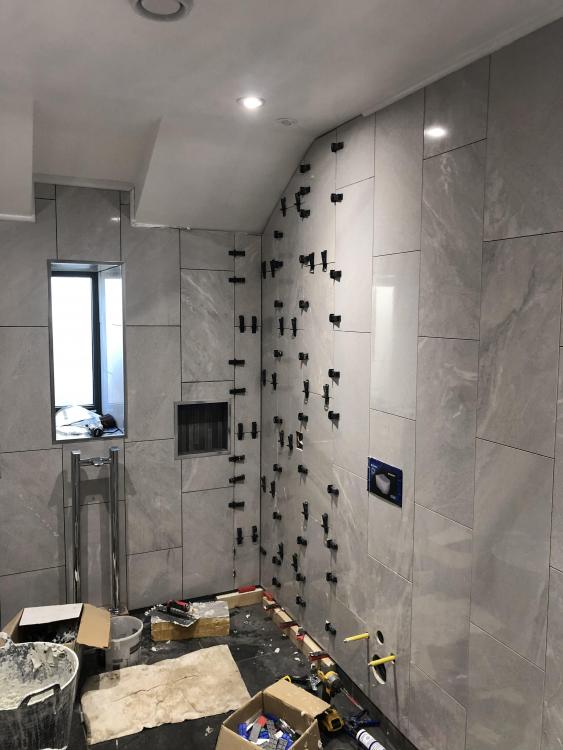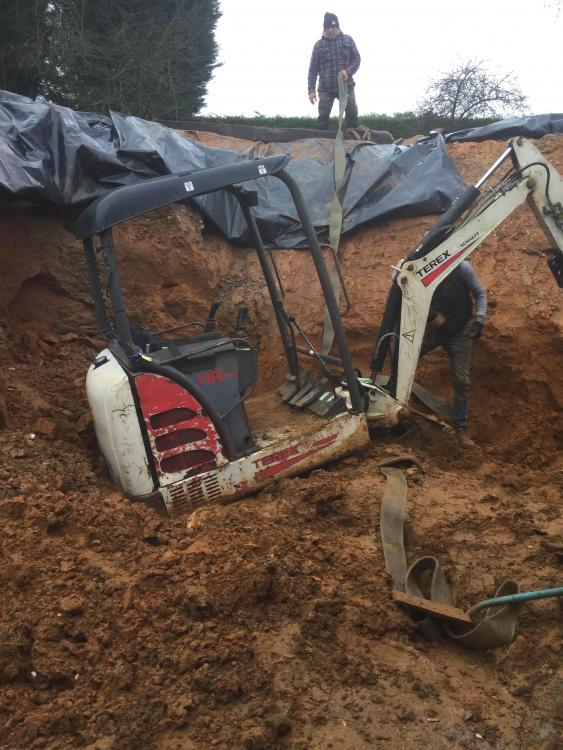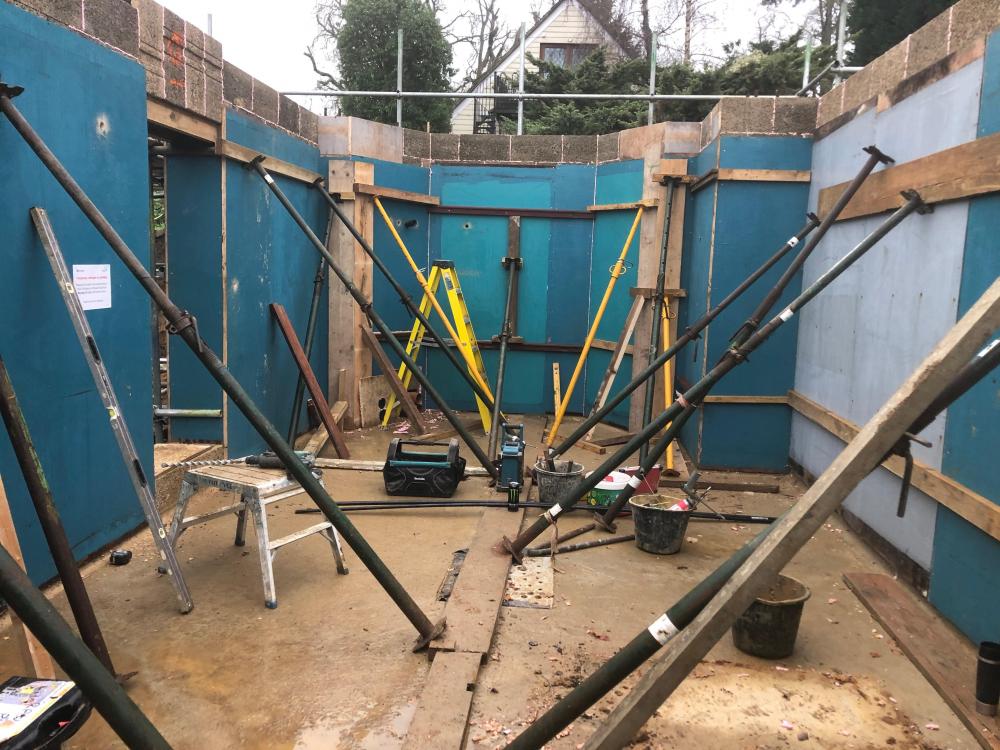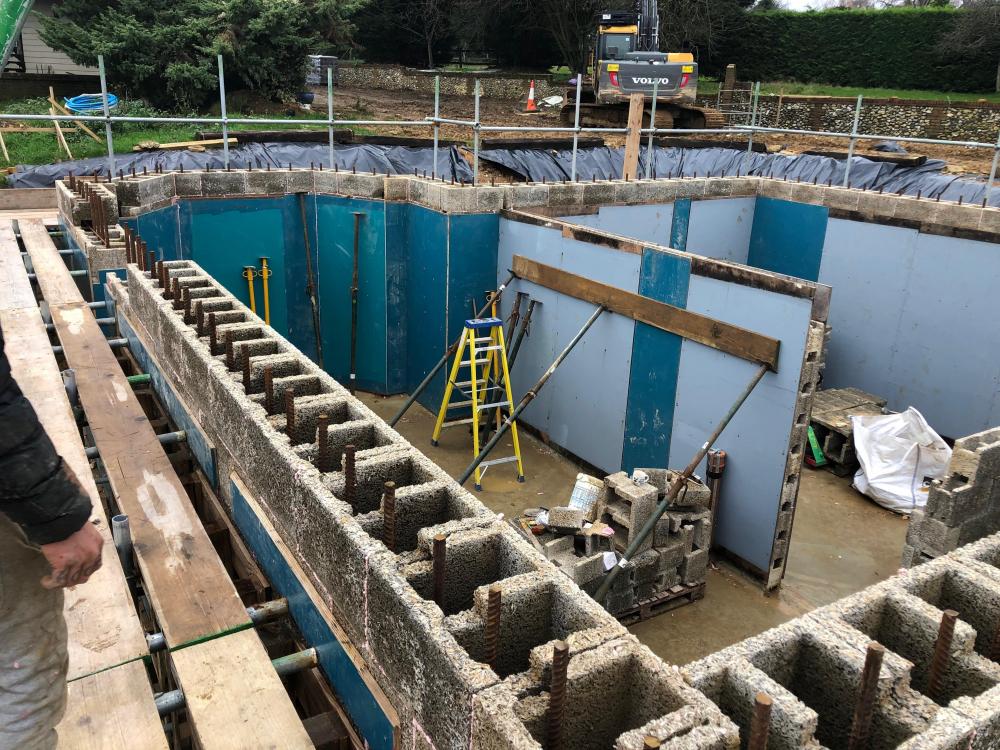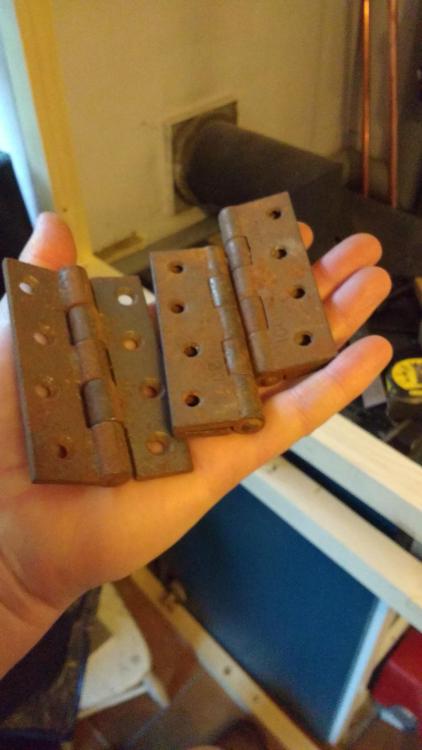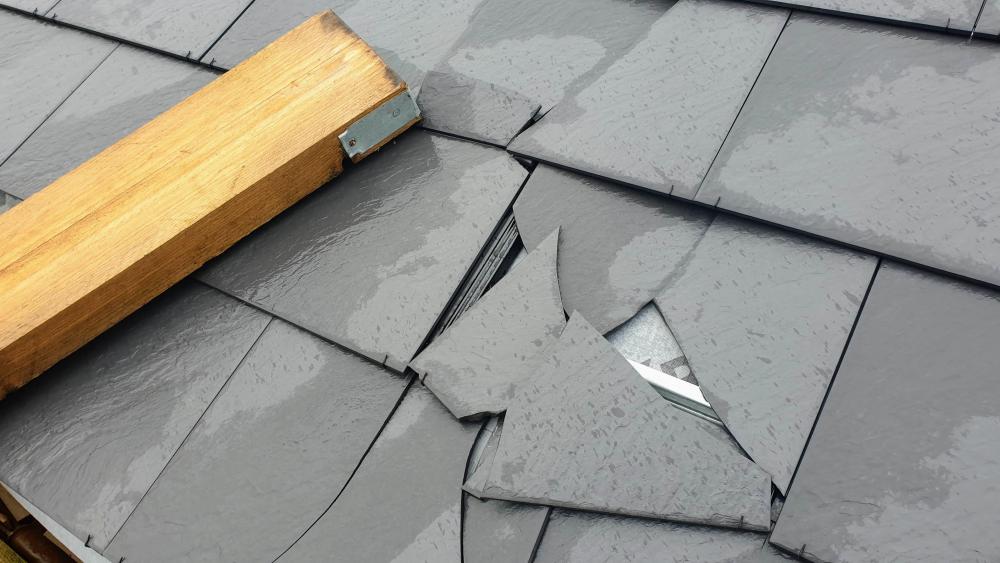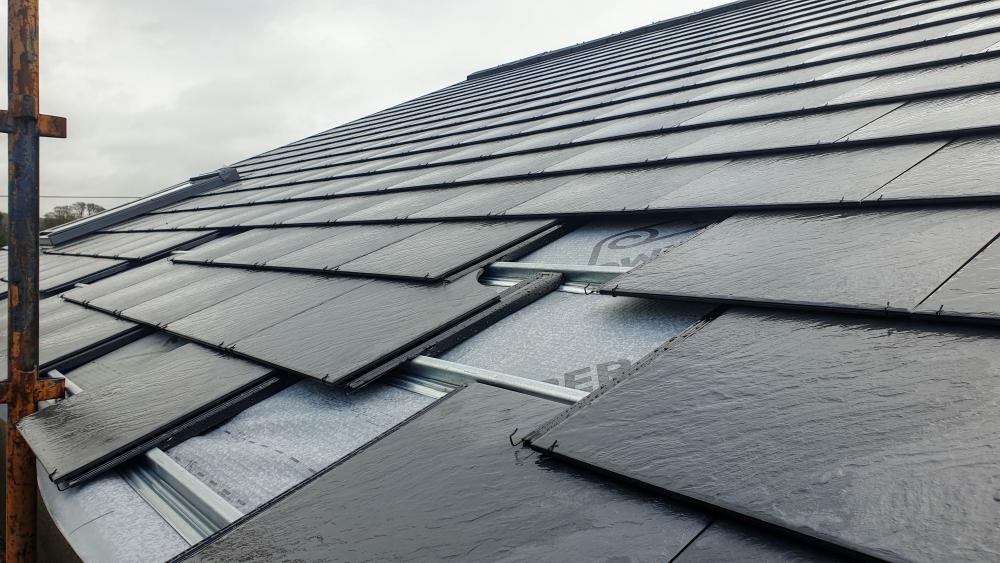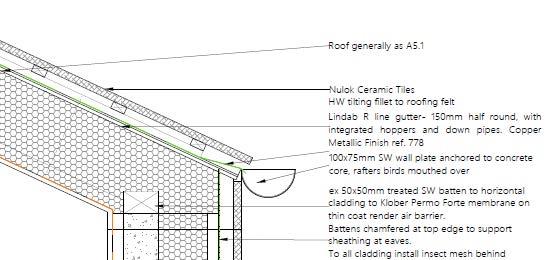Leaderboard
Popular Content
Showing content with the highest reputation on 12/31/20 in Posts
-
3 points
-
but unless your building a house to sell on it’s not a business. I installed MVHR for quality of life, I have a tv because I like it and can afford it. I don’t have granite worktops because I think they are massively overpriced (and not that easy to look after/based on kitchen installation fir years and hearing from customers). I am always surprised by people having new range Rovers on the drive but living in a pokey terraced house. I would rather have a detached nice house and drive an old Merc (? oh I do). It’s all about life’s choices not necessarily justification.2 points
-
2 points
-
We're up to ground level on the Durisol build and nothing went wrong with the pour due to belt and braces by the other half. The rain has been never ending and the small digger ended up stuck in the mud. We have very sandy ground and it just sucks you in, managed to Lift it out from above with the digger. We are now putting in the step foundations as we are on a hill, the previous house had massive great lumps of concrete installed, obviously to stop the house slipping down the incline! Because of the awkwardness of these and the ground being in such a state, he's filling up jumbo bags with concrete mix and dropping it down into the deep foundations. Yes we could have pumped it in but there's no hurry and it's kept him busy whilst we are in the dreadful lockdown. My daughters main builder got ill and then the daughter and her husband got it, on the mend now but both my husband and l have no idea why we didn't get it to! Hubby is in the process of making a wooden template for the half round bay which he thinks will help with the foundations and the laying of the durisol blocks to get the shape correct, it's 4.6 across and looks very large but rather good. HVMR has enormous pipes...so glad we have a basement as all the equipement for the ground source and ventilation will be in here, I didn't realise how much pipework is needed. The daughter has had to use large pipes almost everywhere as the structural engineer wasn't happy with 28 pipes being put through a structural wall! Her standing seam roof is going on and it's about 1/4 done, it will take 6 weeks to install, a lot of work. Part of it will be gold, can't wait to see this bit, sounds awful but knowing her it won't be. New year will see her roof window installed, this also comes down the side of the building as well, it's been a nightmare finding a company to supply this, fingers crossed it goes well. Happy New year to everyone, if your just about to start your build then best wishes for an uneventful outcome, but expect your pocket to be quite empty by the time your finished!2 points
-
I last looked at this some time ago so I might be wrong now or out of date.. As I recall the process and VAT treatment is different depending on the order value. For small orders I believe they are meant to register with HMRC, charge UK VAT and remit this to HMRC. For larger orders I think they they are meant to ship it VAT free (no EU or UK VAT) as you will be charged UK VAT on arrival at a port of entry. Someone will call telling you how much VAT to pay and what their handling fee is. In other cases the post man put a note in your post box with a demand for the VAT. This is meant to happen already for orders from ourside the EU (China for example). I can't remember where the break point is but think its in the £50 to £150 range. My guess is some small companies may not bother to make changes for the UK market. They may just continue to quote "inc EU VAT" prices to everyone that visits their web site. If you pay that beware you might have to pay UK VAT as well.1 point
-
Just had a browse through the McAlpine catalogue and confirmed what I was thinking, its crap. Anyone want a brand new boxed slot drain?! Yeh it'll look sort of modern, any wetroom is going to look modern-ish, but no worries my Mrs will find some rustic junk to chuck in there!1 point
-
I cannot see how this will work, unless you are getting all your stone cut to a regulated size how will you keep a nice regular face, the stone will be all different widths which you then lay to a nice line by having more or less poking backwards into the cavity.1 point
-
Totally agree, but I was trying to address the more direct 'is it worth it' question from a monetary standpoint. For an existing dwelling, where there is already whole house heating and extraction, then the return would be much lower. Possibly negative as low airtightness would render the heat recovery element negligible. Maybe this is what I need for my fancy stairs1 point
-
Just make sure the plasterboard (should be 12.5mm) is the same as the blank length of the fixing or they won’t work. I never had a setting tool, just a spanner type thing that stopped the fixing from spinning.1 point
-
This is exactly what the contingent valuation considers... the harder to measure items that you are happy to pay for.1 point
-
Found 3 old, plain steel, slightly rusty, 100mm hinges, they'll do for my "door". Really heavy duty. Might give them a quick citric acid bath as a treat. I always seem to make up a hinge jig per project, for whatever hinge I'm using and then scrap it! For use with my diddy Bosch router. Always come out a treat mind, even in crappy softwood or reclaimed rough stuff. Usually out of flooring t&g offcuts or MDF. Might try and keep this one and write on it what it's for then give it a coat of varnish.1 point
-
1 point
-
It is a requirement in Scotland for rooms with a combustion appliance (in this case gas boiler and hob) If it is not a requirement in England, it should be, and why would you not want one? Particularly as you can get it built into the heat alarm. And it is there should the buyer wish to let it.1 point
-
All the 'humanure' info I got only refers to urine diverting, no sex segregation was mentioned. Everything composts just fine, given a very long time (don't go tipping the bucket for a year). You might be right about the garden size as my female Labrador never made typical bitch lawn stains, I suspect that happens when (any) dog uses the same spot constantly. Males don't really do that as most learn to cock their leg. I think the National Trust female bar might have been to preserve modesty, considering the logistical difficulties (in the absence of sheewees). Urine pH varies according to diet and metabolism, our urinary systems are similar, but sex hormones and the prostatic secretions play a part in odour, and as many domesticated species are not intact it's hard to be certain this isn't an urban myth. Yup, things we discuss...1 point
-
1 point
-
1 point
-
1 point
-
Nothing sticks to cut gypsum in the core of PB It’s like trying to glue something to talcum powder. No sale.1 point
-
Don't forget the 25mm flat wood bit. (Though I'd use a 25mm holesaw).1 point
-
There is a BIG difference between the burn temperature and the body temperature of a stove. If you want to measure the burn temperature the normal place for a thermometer is on the section of single wall flue immediately above the outlet. Even that will be lower than the actual burn temperature. Our stove is a convection stove so the sides don't get particularly hot at all. It has an extra "plate" fixed to each side and the back that encourages more heat to leave the stove by convection up the gap. It also means it has some increadably low "distance to combustible materials" figures compared to most. It is that distance to combustibles you need to note for your chosen stove to make sure you can comply with it's requirements.1 point
-
I don’t believe my stove gets anywhere near those temps, but in a well insulated house it does not run fir more than a couple of hours at a time.1 point
-
Dead right. I cannot see any value in swapping my cheap kitchen counter top to an expensive granite one, but people still do. And I bet I can cook better than most of them.1 point
-
Hello Jilly. Hope this helps. I have put my thoughts in line with your text and in italic. Update: I'm a bit stressed. ..I didn't get these replies until after the job was done and it was too late... Don't be, there is often more than one way of looking at things, and, you have all the resources of BH at your disposal. I chipped the cement off as best I could, cleaned the steel and painted with red oxide. Good approach but can see how you may still have a concern. However, the windows have been installed and there is a small leak at the bottom near this place, the fitters came back to seal again but its still leaking. They will come back (but Christmas is causing delays), and they are making an aluminium shroud for the outside. Maybe don't conflate the two things.. leaky windows with steel corrosion. Separate the two issues. I didn't realise about the bituminous paint thing (which the structural engineer specifies when you look through the detail). Yes they do as this is a common approach when you design / convert a farm building or an industrial building.. we know that this interface between the column, ground level, foundations and walls is a tricky area to detail. OMG, I can see this is my fault. Because there had been so many little problems with the builder I had decided to ask him to stop at the superstructure and I would go on to subbies, but this has left me wide open to making mistakes...like this. No Jilly it's not your fault. What you are doing in my view is exhibiting a good understanding of the build process, identifying previously unforseen problems before they really become an issue, which almost always occurs on renovations / conversions seeking advice, then a solution. As a further word of encouragement lots of companies would love (give their back teath) to have their graduate trainees exhibiting / questioning matters as you are doing. Is there some kind of desiccant that will dry this out? How can the steel be treated retrospectively?? Will BC make me take the windows out?? I hope the comments I have made above will give you some encouragement but now time for some substance! BC will accept a reasoned argument so no need to "take windows out" that is last resort stuff. But for all.. if you wind BC up then.. If any other members can chip in then thanks. Jilly as I said above. Don't conflate the two issues. Your windows and doors should be drained with small drainage channels and outlets. The amount of water that comes out these will be small but if these are not located / working correctly this is more likely to cause a problem with the glass rather than the steel. I'll leave this to the other members to comment on. I'll give up on the italic now. Turning now to the steel corrosion and the fact that this is a conversion. Often when you are renovating you have to take a pragmatic view. That post you have looks quite chunky. It also looks like an older type section. I suspect that the wall thickness of the post may be relatively quite substancial. The reason this matters is that the section can suffer quite a bit of corrosion before it becomes unable to carry the loads. Also, the corrosion that is happening is near the end of the section, this is where the bending forces caused by the wind and so on are less. Think of it as a ruler getting bent, the wind sucks the adjacent doors/ windows out, they are attached to the column and most of the movement / bending in this takes place in the middle.. the bending forces are greater here in the middle of the post. At the top and the bottom the column carries more vertical load (also shear load for the keen) but a locally thinner section here can often cope with this and in Jilly's case this thinning is cause by the rust. Yes that is a bit of theory.. but it's relevant. Simplistically when we design and consider older structures that have got a bit of rust on them we look at where the forces are. We look at the depth of the corrosion and reduce the effective section thickness in these places, then analyse that. Also, the rust provides a protective layer (sacraficial layer) that helps stop the oxygen getting to the metal that is still intact. We then look at the rate of corrosion and try and ascertain if this rate of corrosion will reduce the design life of the structure which currently for domestic housing is about 50 -60 years.. and that discussion is for another time. Jilly. In summary you may best just to leave this alone as the more rust you scrape off and mess about with it the more harm you may do than good. I think you should make sure that the glazing folk have set up the drainage channels outlets the correct way. Make sure you channel any water from a patio etc away from the house. If you wish and if you want to be sure you can drill a hole in the post to get the thickness (about 1/4 to 1/3 up the height of the column) , take some really good close up photos of the rust and so on. BH members will give you some pointers as to how you can check this out structurally / get an opinion on this. Also, take some photos and post a floor plan so that folk can see what this post is holding up. All the best.1 point
-
Females should invest in a Shewee - brilliant invention (I've used mine for hiking Killi and Everest Base Camp) and I'd avoid portaloos at all times. Luckily our neighbours let us use their loo so we never had to use the site one ?1 point
-
It's basically a requirement of the 18th edition regs. The designer can avoid it if a risk assessment is carried out. Think though about how many things in a modern house could be fubar'd from a surge, be it from the supply side or atmospherics. From white goods to boiler controls along with the obvious mains connected routers, pcs etc. You might be able to mod your cu and do it up front or just individual circuits.1 point
-
It’s now in BS7671 SPD modules can be fitted in consumer unit protecting. Whole installation, retro fitted afterwards to protect whole installation.1 point
-
Oh gawd, I don’t know ? The main BR requirements for what I’m involved with haven’t changed ‘much’ so just tend to stick with stuff I know. If I am wrong, Building Control will soon tell me ? @alex199 Your opening dimensions appear to comply as they provide a clear openable area of 0.5. How high is the cill above floor level as it should not exceed 1.1m? As for the hinges, Paragraph 3.6d states... ”Windows should be capable of remaining open without being held.” So you would need to replace the existing hinges.1 point
-
Yes. Planners don’t like building forward of an existing build. How close is your side wall to your boundary/neighbours wall?. Your plans show windows on the first floor to the neighbours side!. Extending your side house wall next to your neighbour may be difficult IF you can get planning anyway.1 point
-
That is going to be a complicated extension, incorporating support for bedroom 5 that sits on the existing side wall of the garage. The planners may not like it extending further forward. If it's a recent development you may need covenant permission that might not be forthcoming. You will need to join it to the neighbours wall with their permission, or alternatively build your own wall very close to theirs with all the complications that entails.1 point
-
Welcome Adam I assume the desire for Net Carbon Zero is an environmental aspiration. It might be worth getting a handle on some figures. Concrete emits about 375kg CO2 per m3. EPS is about 66kg/m3. So assuming a passive standard ICF wall is 200mm eps /150mm concrete/50mm eps thats 0.15m3 concrete/m3 and 0.25m3 eps or about 73kg CO2 per area eternal wall excluding finishes or for 200m2 of wall area about 15 tonnes CO2 emitted all in one big bang at the time of building the house. Compare that to an equivalent twin wall timber frame 300mm cellulose built wall. OSB stores about 1 tonne co2/m2 - 200kg co2 to manafacture = 800kg Net negative co2/m3. Timber is also net negative, about -500kg/m3 Cellulose is also about -80kg/m2 Twin wall construction 10mm OSB 300mm cellulose 7% timber 10mm OSB works out at -16kg/Co2/m2 (OSB) - 22.5kg/CO2/m2 (Cellulose) -10.5kg/CO2/m2 (timber) Total Nett negative 48kg/CO2/M2 or about 10 tonnes of carbon stored in the house for the duration of it lifetime. Total Difference of about 25 tonnes CO2 Next build to passivhaus standards at 170m2 floor area and buy electricity from the grid at about 250gCo2/Kwh run it through a heat pump with an average COP of 3 and your carbon savings from change of construction type would heat your house for 116 years. Thats before you add solar PV, Decarbonise your foundations and roof structures, Consider the lowering carbon intensity of grid generation and consider improvements in heat pumps. The reality is that the concrete house will start the race over a century behind and never catch up.1 point
-
Hi and welcome. Before you decide on construction methods, research "decrement delay" There is more to insulation than just the U values and the performance of the "same" walls with PIR / PUR insulation (like you get in most SIP panels) and the "same" wall in say a timber frame using mineral wool or wood fibre insulation. Take a look at this thread recently Here he posted an analysis of 2 roof constructions that both had the same U value, but look how much quicker heat passes through the PUR one compared to the mineral wool / wood fibre one.1 point
-
Welcome. Decide on the foundation system first, it is where it all starts. Then go the timber frame route, things are much better when they are build in a factory.1 point
-
Dehumidifier. In our last place (old 4 storey town house), we pretty much lived in the basement and closed off the stairs to keep the heat in during winter. With 2 adults, 2 kids, a dog and cooking etc, the windows were running with condensation every morning. We bought a dehumidifier for about £100 or so IIRC, and left it in the corner doing its thing 24/7. Its amazing how much water they take out of the air. We still use it now in the new place occasionally if we've got a lot of wet clothes to dry.1 point
-
I've only refurbed one room here and even being on this forum I didn't quite grasp the importance of air tightness otherwise I'd have designed elements differently. It'll certainly influence what I do on future rooms. A refurb is always imo harder than starting with a clean slate of course as you have to constantly work around other people's screw ups! It also took a visit to a highly insulated, low energy house and an understanding of it's construction to make me see (as I now do), the light. Basically I renewed the ceiling joists: I infilled with pir: Foil taped the joints: The went over the lot with a membrane: That shows the membrane concept. At that point it was pretty toasty and airtight. (Still cold bridges at the joists). All this is a bit moot as I have bfo cutouts for downlights, speakers and a ginormous, ceiling mounted body dryer. I've always had a plan to reinstate the insulation and membrane at these points but it's more work, a lot of which could have been avoided (not so much the body dryer mind). I maybe SHOULD have counter battened and used low profile LEDs. Lowering the ceiling a tad with counter battens would too have helped with tiling and decreased the room volume a bit meaning less to heat. The walls followed with battens infilled with pir then a taped vcl. Ceiling vcl joins the wall vcl joins the floor vcl: The only saving grace to all this is I hope to eventually have a warm roof and ewi effectively wrapping all my mistakes in a thermal envelope.1 point
-
Here's one to keep our @Russell griffiths happy, and to help reduce @SteamyTea's Schadenfreudesucht. Please could you review my thinking, and see if I've missed something. Thanks. Two years ago, just after the roof was tiled with Nulock cermaic tiles, a bit of a hooley blew up: long story short it blew some scaffolding planks off the scaff and onto the roof. Live and learn. Next time scaff plank clips. ? Here's part of what the storm did. and here's how I repaired it The photos were taken when the storm was still pretty full-on: I was clipped to the scaffolding with a full harness. Nulok is easy to replace though - and I was keen to get the job done to prevent further damage. Fast forward two years. Drip, drip...... WTF !!! how's that happened then? Dry up to now why, how, bugger it ... Debbie looked at me and didn't say If ya can't take a joke, don't self build . (my signature line) There's not much of a drip. In the recent South Westerly storm that knocked us all on our heels, (warm wind), not a drop came through the roof - or perhaps better put, not enough water leaked in the roof to come through the roof build up . When its frozen outside, there's no drip. When there's cold northerly rain, there is a drip. The roof build up is; Tiles Metal Batten Felt Counterbatten 200mm insulation (between joists) 100mm underboarding insulation batten 12.5mm PB Neither was there a drip when it froze ... this morning - freezing - no drip before we popped out to the shops, but there was a drip when we got back. Temperature had risen by 5 degrees...... No rain - but there was ice on the roof when we left, - the roof was dry when we got back. As I write this, the damp patch has all but disappeared in the PB. There is no roof space, so I cant see the exposed underside of the roof from inside. Heres a cross section - Why did it happen now? A bit of head-scratching and came up with the following - what have I missed? The repair to the tiles was done under pressure: it was quite dangerous - windy enough to be fully harnessed and clipped on. The repair to the tiles took about 15 minutes. Nulok is very easy indeed to replace - throw the broken tiles off the roof, slide in a new one. They simply clip in. What I did NOT DO was inspect the underlying felt because I was worried about being blown off the roof. I bet I simply missed a small rip or two in the felt...... If thats correct, given sufficient temperature contrast, there would be condensation on the bottom of the tiles. And maybe there's a bit of ponding on the felt... and the water makes its way through the small rip. And because its small hole, it takes ages to show up. Maybe it took that long to trickle through over 300mm of roof build up. Anyway, have I missed something? Constructive comments welcome. @PeterStarck - what do you think? (I ask becaue you have Nulok) Tomorrow, scaff goes up, fetch a roof ladder (although you can walk on Nulok tiles) and then a wait until there's a long enough weather window to whip some tiles off to look-see. Bye bye 2020. Lets hope 2021 is better eh?0 points
-
Best to build fail safe - semi non slip vinyl coved up walls and physically clamped to shower drain0 points
-
0 points
-
0 points
-
I thought that female pee was not suitable for compost. Number 2s are probably OK. Says the National Trust: https://www.treehugger.com/is-male-pee-better-than-female-pee-the-compost-conundrum-4857550 I have a (female) friend with about 9 female dogs who asserts the same opinion about canines. She paved her entire back garden 'cos female dog-wee would ruin any grass. Perhaps this is Mansplaining ?. Though, @Jilly, having had horses you may have a larger scale experiment. Was it a 'mare? F0 points
-
0 points
-
Many years ago the water treatment guy's manager on a near finished site I was on asked about welfare facilities. The site manager said he'd make the gents on floors 15 and 5 available as long as the water treatment company cleaned them at the end of the job. Not wanting to clean two lots the water guy's manager said just to leave the gents on 15 open. Off handedly he told his guy's there were loos on site. Somehow he told them the loos were open on 15 AND 5. We all used to indulge in the pub culture a bit hard. Coming down from the roof one day after a serious pi** up one lad from NZ REALLY needed to go. He stopped on 5 and ran to the loo... LOCKED. He then then ran frantically round a pristine empty floor trying all the WCs which of course were locked. Now in blind panic he chanced upon an open riser cupboard. In he ran into the dark riser, dropped his strides and let rip. As his eyes adjusted he realised he was actually squatting on an open grill floor and had explosively just shat down 5 plus floors. It gets better... Just at that moment the building manager arrived on the floor with some prospective tenants. Keen to see not just the office space but the M&E risers too they began their tour. By sheer luck the lad in the riser had rung his mates having used his shorts (he'd gone commando that day) to "clean himself up" with instruction for them to go to M&S and get him some new shorts. A couple of them arrived on the floor to find the tour in full swing. Trying to keep a straight face they signed to the building manager's PA and whispered what had happened. In shock she was desperately trying to get the manager's attention, mid him espousing the virtues of the building. It went on the lines of: "Not now Debbie!" "But it's REALLY important!" Taking him to one side she muttered what had happened and that it might not be a good idea to show them the risers. "I suggest we break for lunch!" said the building manager. Alan from Wanaka you're a legend mate!0 points
This leaderboard is set to London/GMT+01:00



